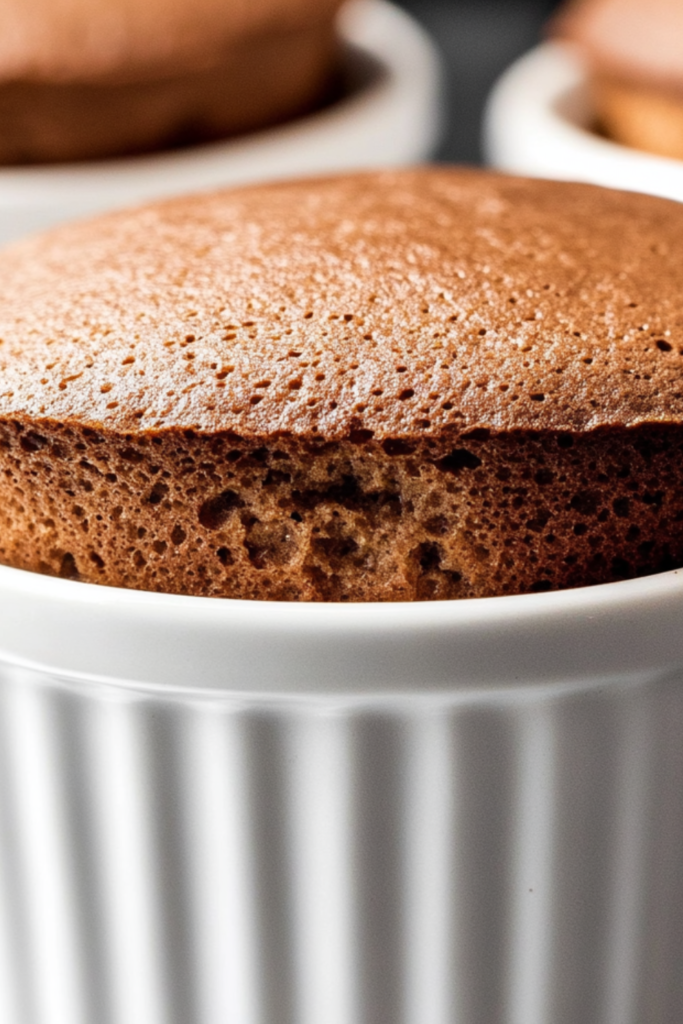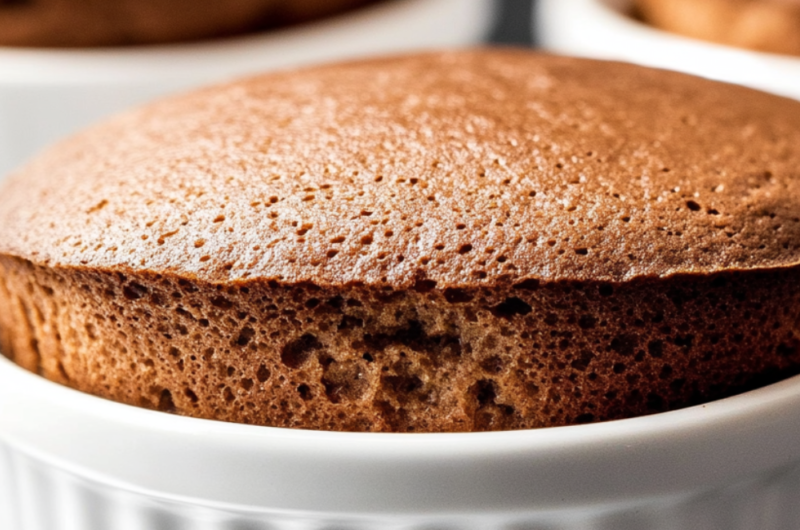The first time I tried to make a soufflé, I thought I nailed it. It puffed up, looked dramatic, and smelled like a dream—until I pulled it from the oven and it collapsed like a popped balloon. Texture? Gritty. Flavor? Overcooked cocoa sludge. I blamed the oven. Then the ramekins. Eventually, I realized the problem wasn’t the tools—it was the system.
That’s when I studied how Gordon Ramsay does soufflés. Turns out, there’s nothing casual about this “easy” dessert. His method relies on control: heat, timing, structure. Get it right, and the soufflé becomes a molten, cloud-light masterpiece. Get it wrong, and it’s chocolate cement.
Here’s how to get it right every time—and what nearly ruined mine.
Why This Works (And Where Most Go Wrong)
Gordon’s soufflé is all about structure and timing. The rise doesn’t come from baking powder—it comes from air. Specifically, the microscopic air bubbles you build into the egg whites.
Here’s where most people blow it:
- Under- or over-beating the egg whites. Soft peaks won’t hold the structure; stiff but dry peaks won’t fold well. You want glossy, stiff, not grainy.
- Too aggressive folding. You deflate the batter and lose lift. Ramsay folds in stages—slow and patient.
- Skimping on prepping the ramekins. The butter + sugar combo isn’t just for nonstick—it’s a ladder for the batter to climb.
- Opening the oven. You just told the soufflé to sit down. It will.
Ingredients That Actually Matter
- 56g unsalted butter – Fat for richness, helps melt chocolate smoothly
- 113g semi-sweet chocolate – Choose quality; 60–70% cacao works best. Chips are a shortcut but bars melt cleaner.
- 3 large eggs, separated – Yolks for richness, whites for structure. Room temp is non-negotiable.
- 1 tsp vanilla extract – Balances the bitterness of chocolate
- 1/8 tsp salt – Wakes up the chocolate
- 1/8 tsp cream of tartar – Stabilizes egg whites so they don’t collapse
- 38g granulated sugar – Adds sweetness and structure to the meringue
- Extra butter + sugar for ramekins – Not optional. They create friction and help the batter climb the sides.
How To Make Gordon Ramsay Chocolate Soufflé
Step 1: Melt the chocolate and butter over a double boiler until smooth. No lumps, no rushing. Let it cool for 3–5 minutes so it doesn’t cook the yolks.
Step 2: Whisk in the yolks, vanilla, and salt. This becomes your base. It’ll be glossy, thick, and smell like ganache.
Step 3: Beat the egg whites and cream of tartar until soft peaks. Then gradually add sugar—a tablespoon at a time—beating until you get stiff, glossy peaks. Don’t walk away. Overbeating is unrecoverable.
Step 4: Fold the whites into the chocolate base in 3 additions. First third to loosen it. Then carefully fold in the next two, keeping volume. Use a spatula, go under and around. Be patient.
Step 5: Chill the batter for 5–10 minutes. This tightens the structure and gives you time to prep ramekins.
Step 6: Preheat oven to 400°F (204°C), rack in the lower third. As soon as soufflés go in, reduce heat to 375°F (191°C) to control the rise.
Step 7: Butter and sugar the ramekins. Fully coat every millimeter. Pour, spin, and dump excess sugar. That crust is essential.
Step 8: Fill the ramekins. Smooth the tops. Run your thumb or a knife edge around the rim—this “channel” helps lift evenly.
Step 9: Bake 13–14 minutes. Edges should be firm, center should jiggle slightly. Do not open the oven. No peeking.
Step 10: Serve immediately. This is not a make-ahead dish. Soufflés begin deflating as soon as they hit air—but that just means it’s time to grab a spoon.

What Gordon Ramsay Says About This Dish
“It should be light, not heavy. That’s the mark of a proper soufflé.”
Translation: If yours feels like a lava cake, you lost the air. Fix your folding.
“The ramekin is your mold—treat it like part of the recipe.”
What I learned: Butter every corner. Miss a spot, and it’ll rise unevenly or stick.
“Egg whites give it life. Don’t kill them with overmixing.”
Tested truth: My first batch had no lift because I beat the whites too far—dry, foamy, dead on arrival.
“You’ve got 90 seconds after it comes out. That’s the show.”
Reminder: These are performance desserts. Delay = deflation.
What I Got Wrong (And How I Fixed It)
- I beat egg whites until they were chunky and dry. Result: dense, deflated soufflé.
Fix: Stop at glossy stiff peaks. Shiny = ready. - I didn’t run a channel around the batter. It mushroomed, then cracked.
Fix: That rim swirl creates a clean chimney for the rise. - I opened the oven. I thought it needed a check. It didn’t.
Fix: Trust the timing and leave it alone.
Variations That Actually Hold Up
Swap the chocolate: Go for dark (70–75%) if you want bitter and bold. Milk chocolate? Skip it—it lacks structure.
Add orange zest or espresso powder: Both amplify chocolate flavor without changing structure.
Want it molten? Pull it 1 minute early. Spoon will sink into a barely-set center.
Make it boozy: A tablespoon of Grand Marnier or Chambord in the yolk mixture works—just don’t overdo it.
Pro Tips That Change the Game
- Rest the batter: Even 10 minutes in the fridge tightens the mix and leads to a cleaner rise.
- Ramekins on a sheet pan: Easier to move, keeps base heat consistent.
- Use a thermometer: Want to be precise? Soufflé is perfect at 160°F (71°C) in the center.
- Bake fewer at once: More than 4 soufflés at once can throw off oven temp.
Storage + Leftover Moves
Soufflés don’t reheat well, but:
- Fridge: Cover once cooled. Will keep 2–3 days.
- Eat cold: Turns into a mousse-like dessert.
- Reheat: Microwave 10 seconds at a time—but expect collapse.
- Freeze? No. Texture goes wrong.
FAQs – Covering What You’re Searching For
Q: Can I prep these ahead of time?
You can make the batter and fill ramekins. Chill up to 4 hours. Bake just before serving.
Q: Why does my soufflé taste eggy?
Probably undercooked or your whites weren’t stiff enough—egg dominated over chocolate.
Q: Do I need a water bath?
No. That’s for cheesecakes. This uses dry heat for the rise.
Q: Can I use cocoa powder instead of chocolate?
No. Cocoa lacks fat—soufflé needs melted chocolate for texture and richness.
Q: What size ramekin works best?
6-ounce is ideal. Anything bigger risks undercooked centers or cracked tops.
Try More Recipes:
- Gordon Ramsay Scone Recipe
- Gordon Ramsay Flan Recipe
- Gordon Ramsay Vanilla Souffle Recipe
- Gordon Ramsay Strawberry Souffle Recipe
Gordon Ramsay Chocolate Souffle Recipe
Course: DessertsCuisine: BritishDifficulty: Easy4
servings20
minutes14
minutes454
kcalLight, rich, and perfectly risen—this chocolate soufflé delivers restaurant-level drama with simple, precision-driven steps.
Ingredients
- Soufflé Batter:
56g unsalted butter
113g semi-sweet chocolate bar, chopped
3 large eggs, separated
1 tsp pure vanilla extract
1/8 tsp salt
1/8 tsp cream of tartar
38g granulated sugar
- Ramekins:
14g unsalted butter (very soft)
16g granulated sugar
Directions
- Melt chocolate and butter in double boiler or microwave. Cool 3–5 min.
- Whisk in yolks, vanilla, and salt.
- Beat egg whites + cream of tartar to soft peaks. Gradually add sugar until stiff, glossy peaks form.
- Fold whites into chocolate in 3 parts, gently.
- Chill batter 5–10 min.
- Preheat oven to 400°F (204°C).
- Butter and sugar ramekins fully.
- Fill ramekins. Smooth tops. Run knife around rim.
- Lower oven temp to 375°F (191°C). Bake 13–14 min.
- Serve immediately.
Notes
- Rest the batter: Even 10 minutes in the fridge tightens the mix and leads to a cleaner rise.
- Ramekins on a sheet pan: Easier to move, keeps base heat consistent.
- Use a thermometer: Want to be precise? Soufflé is perfect at 160°F (71°C) in the center.
- Bake fewer at once: More than 4 soufflés at once can throw off oven temp.

